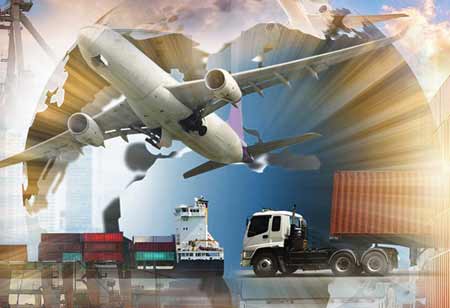THANK YOU FOR SUBSCRIBING
THANK YOU FOR SUBSCRIBING

By
Logistics Transportation Review | Tuesday, November 07, 2023
Stay ahead of the industry with exclusive feature stories on the top companies, expert insights and the latest news delivered straight to your inbox. Subscribe today.
As temperatures rise, extreme weather events become more frequent, and seasons shift, the European cold chain logistics sector faces substantial challenges and must adapt to mitigate potential disruptions.
FREMONT, CA: Cold chain transportation is the process of transporting temperature-sensitive products, such as food, pharmaceuticals, and chemicals, from one location to another while maintaining a constant temperature. This is essential to ensure the safety and quality of the products.
Several factors can affect the temperature of products during cold chain transportation, including the ambient temperature, the type of packaging used, and the mode of transportation. In Europe, the climate can vary widely from season to season and from country to country. This makes it important to take steps to maintain a constant temperature during cold chain transportation, regardless of the time of year or the route being taken.
Rising Temperatures and Temperature Control
One of the most direct consequences of climate change in Europe is the increase in average temperatures. As the mercury rises, maintaining the required temperature control within the cold chain becomes more challenging. The integrity of perishable products, like fresh produce and vaccines, is at risk if the temperature-controlled environment is compromised during transit. The need for advanced refrigeration and temperature-monitoring systems has become more critical than ever. Investment in energy-efficient and eco-friendly technologies will be essential to minimise the carbon footprint of cold chain operations.
Altered Weather Patterns
Climate change is associated with more frequent and severe weather events, such as heatwaves, storms, and heavy precipitation. These events can disrupt transportation routes, cause delays, and damage infrastructure, all of which can have a detrimental impact on cold chain logistics. Companies need to develop more resilient supply chain strategies, which may include diversifying transportation routes, implementing contingency plans, and strengthening the infrastructure of storage facilities and distribution centres.
Seasonal Shifts
Climate change can disrupt the traditional seasons and growing patterns, affecting the availability and distribution of perishable goods. For instance, European farmers may face challenges as they adapt to unpredictable growing seasons and increased pest pressures. This affects not only the sourcing of raw materials but also the planning of cold chain logistics. Companies need to adjust their schedules and routes to accommodate these changes, while also improving communication and collaboration with suppliers.
Regulatory and Compliance Challenges
To combat climate change, European governments are implementing stricter regulations to reduce greenhouse gas emissions and encourage sustainable practices. Companies involved in cold chain logistics must adhere to these regulations, which often involve reducing emissions from transportation, optimising routes, and using more energy-efficient technologies. Failure to meet these requirements can result in penalties and a tarnished reputation. Businesses that embrace sustainability in their logistics operations comply with regulations and also appeal to environmentally conscious consumers and partners.
Market Demand for Sustainable Logistics
Consumer preferences and expectations are evolving, with increasing demand for sustainable and eco-friendly products and services. Companies involved in cold chain logistics will need to adapt their practices and make sustainability a focal point to remain competitive. Implementing greener logistics practices, like using electric vehicles, reducing packaging waste, and enhancing energy efficiency in refrigeration units, reduces the environmental impact and also appeals to a growing market of environmentally conscious consumers.
Maintaining a constant temperature during cold chain transportation in Europe:
Use the right packaging: The type of packaging used can have a significant impact on the temperature of products during transportation. Insulated containers and specialized packaging materials, such as thermal liners and gel packs, can help maintain a constant temperature for extended periods.
Use temperature-controlled transportation: Temperature-controlled vehicles, such as refrigerated trucks and trailers, are designed to maintain a constant temperature for the duration of the journey. This is the most reliable way to ensure that products arrive at their destination in good condition.
Monitor the temperature: It is important to monitor the temperature of products throughout the cold chain transportation process. This can be done using temperature sensors and data loggers. If the temperature rises above or falls below the acceptable range, corrective action can be taken immediately.
Regulations and Guidance in Europe
There aresomef regulations and guidance documents that businesses should be aware of when transporting temperature-sensitive products in Europe.
The European Food Safety Authority (EFSA) has published guidance on good hygiene practices for the transport of perishable foodstuffs. This guidance provides recommendations on how to maintain a constant temperature during transportation, as well as other important aspects of food safety.
The European Medicines Agency (EMA) has published guidelines on good distribution practices for medicinal products for human use. These guidelines provide recommendations on how to maintain a constant temperature during the transportation of medicinal products.
The International Air Transport Association (IATA) has published the Dangerous Goods Regulations (DGR). The DGR guides the transportation of dangerous goods, including temperature-sensitive products.
The impact of climate change on cold chain logistics in Europe is undeniable and poses several challenges to the industry. Rising temperatures, altered weather patterns, seasonal shifts, and evolving regulations require companies to adapt and invest in resilient, sustainable practices. The logistics sector's ability to mitigate the impact of climate change is a necessity for the preservation of perishable goods and also for the overall well-being of the planet. European cold chain logistics companies that proactively address these challenges by embracing innovative, eco-friendly solutions will be better positioned to thrive in a changing climate-conscious world.
I agree We use cookies on this website to enhance your user experience. By clicking any link on this page you are giving your consent for us to set cookies. More info





